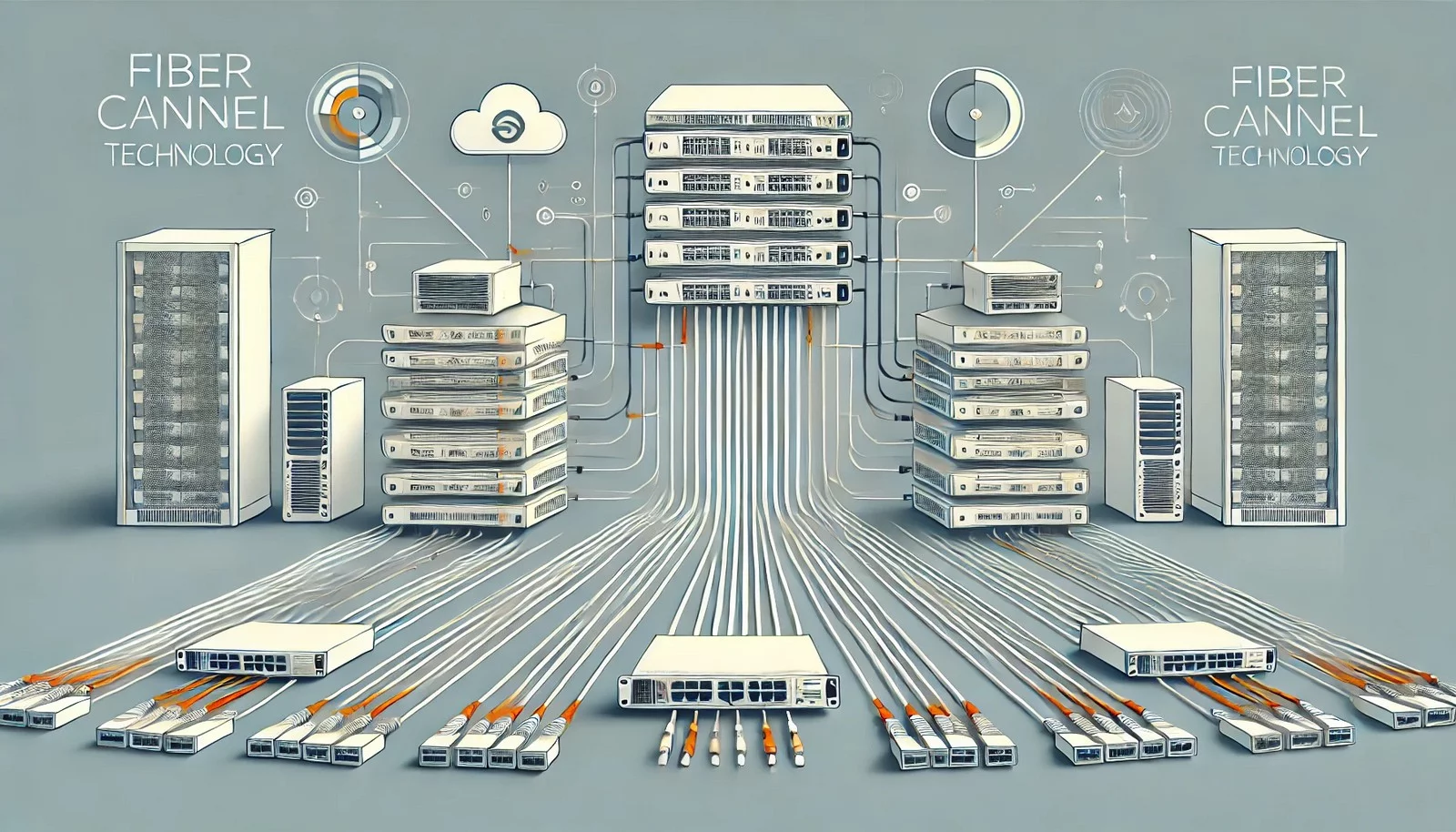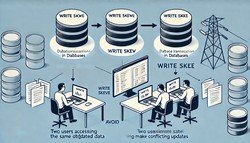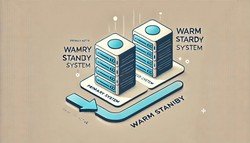Fiber Channel

(Representational Image | Source: Dall-E)
Quick Navigation:
- Fiber Channel Definition
- Fiber Channel Explained Easy
- Fiber Channel Origin
- Fiber Channel Etymology
- Fiber Channel Usage Trends
- Fiber Channel Usage
- Fiber Channel Examples in Context
- Fiber Channel FAQ
- Fiber Channel Related Words
Fiber Channel Definition
Fiber Channel (FC) is a high-speed network technology primarily used for connecting computer data storage devices. It is widely deployed in enterprise storage area networks (SANs) due to its high throughput, low latency, and reliability. FC operates over fiber-optic cables and can also support copper cables in certain configurations. It follows the FC protocol, which ensures efficient data transport, error handling, and scalability across various network topologies. Over time, FC has evolved to support higher data rates, reaching up to 128 Gbps, making it a critical component in high-performance computing environments.
Fiber Channel Explained Easy
Imagine a super-fast highway built just for sending important packages between different storage areas and computers. Fiber Channel is like this highway, designed to transport data at extremely high speeds without interruptions. It ensures that computers can quickly access and transfer information without delays, just like a well-managed traffic system with no jams.
Fiber Channel Origin
Fiber Channel technology was developed in the late 1980s and gained popularity in the 1990s as a reliable solution for high-speed storage networking. It was created to improve upon traditional SCSI (Small Computer System Interface) connections, which had bandwidth and distance limitations. By utilizing fiber-optic communication, Fiber Channel enabled greater flexibility, scalability, and efficiency in large-scale data storage and retrieval.
Fiber Channel Etymology
The term “Fiber Channel” originates from the combination of "fiber," referring to fiber-optic cables used for transmission, and "channel," denoting a dedicated data communication pathway. Despite the name, Fiber Channel also supports copper-based connections in certain configurations.
Fiber Channel Usage Trends
Fiber Channel remains a dominant technology in enterprise storage networks. Over the years, it has continued to evolve, supporting faster speeds, higher security, and better integration with other networking protocols like Ethernet. Although alternatives such as iSCSI and NVMe-oF have emerged, Fiber Channel remains a preferred choice for businesses requiring ultra-low latency and high reliability in mission-critical applications.
Fiber Channel Usage
- Formal/Technical Tagging:
- Storage Networking
- Data Center Infrastructure
- High-Speed Data Transfer - Typical Collocations:
- "Fiber Channel SAN"
- "Fiber Channel adapter"
- "Fiber Channel switch"
- "Fiber Channel fabric"
Fiber Channel Examples in Context
- Large enterprises use Fiber Channel SANs to store and retrieve massive amounts of business-critical data efficiently.
- A Fiber Channel switch ensures seamless communication between servers and storage devices.
- High-performance computing environments utilize Fiber Channel to minimize data transfer bottlenecks.
Fiber Channel FAQ
- What is Fiber Channel used for?
Fiber Channel is primarily used for high-speed storage networking in data centers and enterprise environments. - Is Fiber Channel faster than Ethernet?
Yes, Fiber Channel is optimized for low-latency, high-speed data transfer, often outperforming Ethernet in dedicated storage networks. - What are the advantages of Fiber Channel?
It offers high reliability, scalability, low latency, and secure data transmission. - Can Fiber Channel work over copper cables?
Yes, although it is designed for fiber-optic connections, it also supports copper-based links in some setups. - How fast is Fiber Channel?
Modern Fiber Channel implementations can reach speeds of up to 128 Gbps. - What is the difference between Fiber Channel and iSCSI?
Fiber Channel is a dedicated high-speed storage networking technology, while iSCSI uses standard IP networks to transport storage data. - What are Fiber Channel fabrics?
A Fiber Channel fabric is a network of interconnected devices, such as switches and storage systems, enabling efficient data transmission. - Does Fiber Channel require special hardware?
Yes, Fiber Channel requires dedicated hardware such as Host Bus Adapters (HBAs) and Fiber Channel switches. - Can Fiber Channel be used for cloud storage?
While traditionally used in on-premises data centers, some cloud providers integrate Fiber Channel for high-performance storage solutions. - Is Fiber Channel still relevant today?
Yes, despite the rise of alternative technologies, Fiber Channel remains a top choice for enterprises requiring high-performance, mission-critical storage.
Fiber Channel Related Words
- Categories/Topics:
- Data Storage Networks
- High-Performance Computing
- Enterprise IT Infrastructure
Did you know?
In 2016, NASA upgraded its data storage infrastructure with Fiber Channel to handle the vast amounts of scientific data collected from space missions. The high-speed, lossless communication of Fiber Channel played a crucial role in ensuring the reliability of mission-critical data transfers.
Authors | Arjun Vishnu | @ArjunAndVishnu

PicDictionary.com is an online dictionary in pictures. If you have questions or suggestions, please reach out to us on WhatsApp or Twitter.
I am Vishnu. I like AI, Linux, Single Board Computers, and Cloud Computing. I create the web & video content, and I also write for popular websites.
My younger brother, Arjun handles image & video editing. Together, we run a YouTube Channel that's focused on reviewing gadgets and explaining technology.
















Comments (0)
Comments powered by CComment